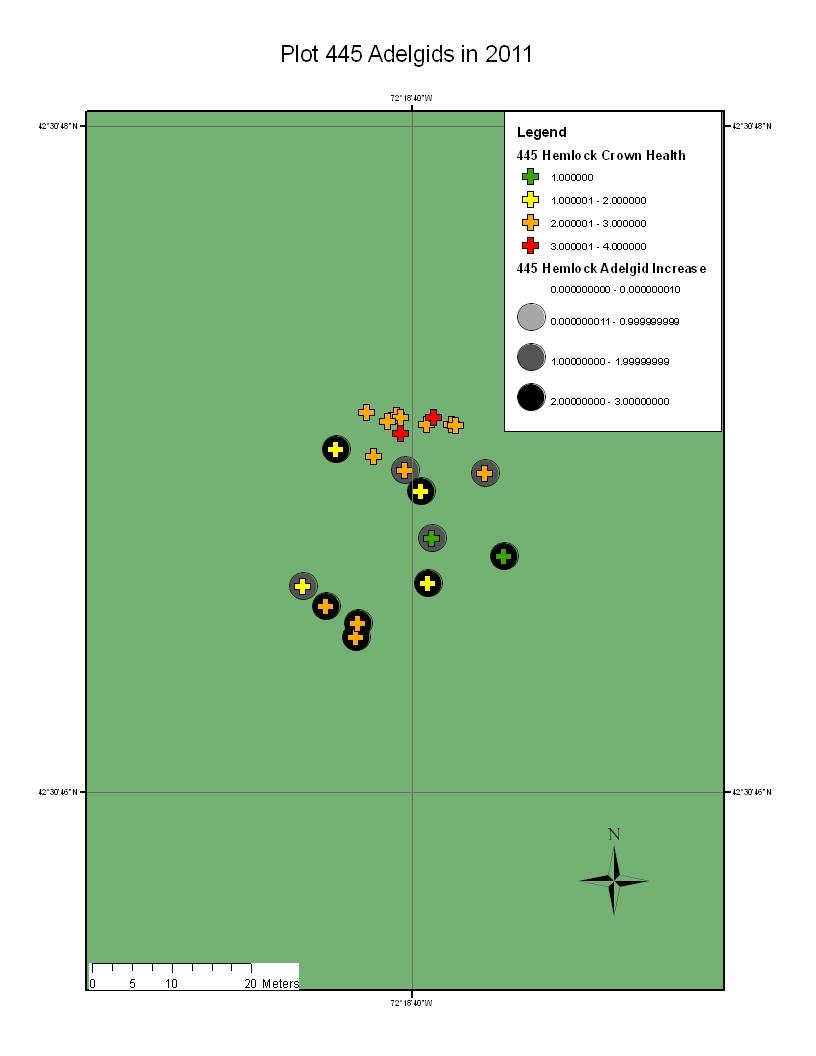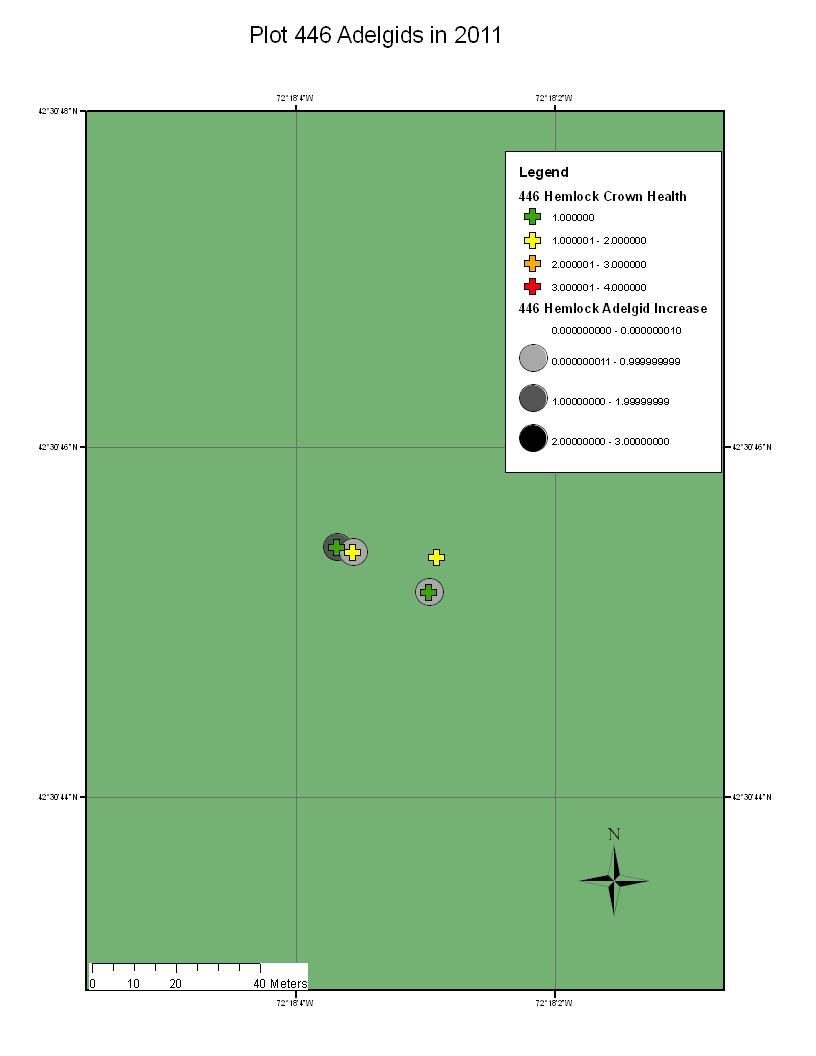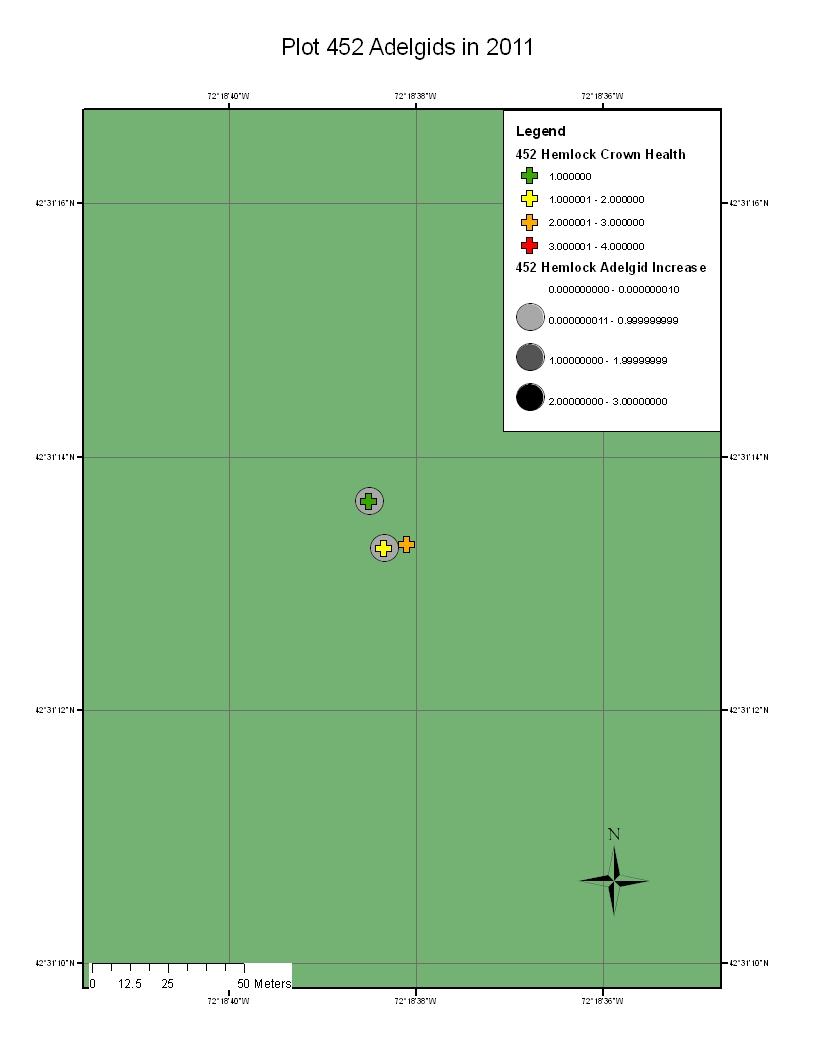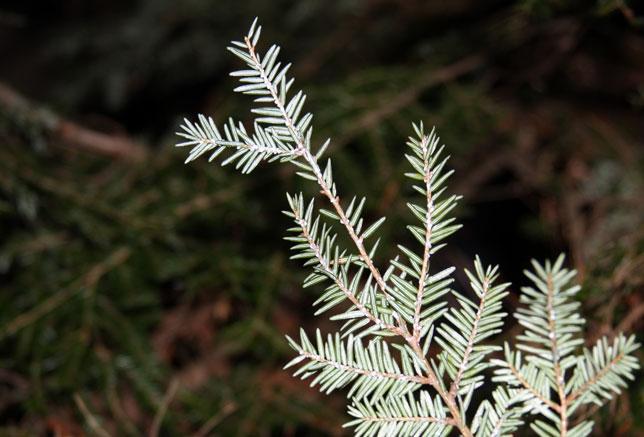The Hemlock Woolly Adelgid is an aphid-like invasive pest native to eastern Asia that attacks hemlock trees by attaching to needles and sucking the sap of the tree. It can be identified by its white woolly egg sack covering present on the underside of branches. Trees infested with adelgids typically lose all their needles and die within 4 years of the first infestation.
The hemlock woolly adelgid was first recorded in the quabbin in 1999. Hemlocks in the Quabbin make up 7.5 % of the Quabbin forest, and it is expected that all hemlocks will die eventually; while pesticides are effective against the adelgids, the need to keep reservoir water uncontaminated and the scale of the forest makes this impractical. There is hope that forestry methods and introduction of a natural predator, the ladybird beetle Pseudoscymnus tsugae, will save some hemlocks.
Adelgids on a hemlock branch
Data collection of hemlock woolly adelgids was done at four Quabbin CFI plots on all hemlock trees larger than 5 cm dbh within a 50 foot radius. Branch averages of adelgids counted were calculated and compared to 2010 branch averages of the trees. All but one tree in plot 453 showed either an increase in the branch average or an equal branch average to the 2010 data.
Additionally, crown class of each hemlock tree was recorded. A tree with a crown class of 1 had 100% to 75% of its branches remaining, a tree with a crown class of 2 had 75 to 50%, a tree with a crown class of 3 had 50 to 25%, and a tree with a crown class of 4 was a dead tree.

Map of plot 445 hemlocks.

Map of plot 446 hemlocks.

Map of plot 452 hemlocks.

Map of plot 453 hemlocks.
Information about hemlock woolly adelgids was obtained from the following sites:
http://www.ct.gov/caes/cwp/view.asp?a=2815&q=376706Overview of hemlock woolly adelgid
http://www.na.fs.fed.us/ss/02/fh_ladybug.pdfPotential of ladybird beetle
